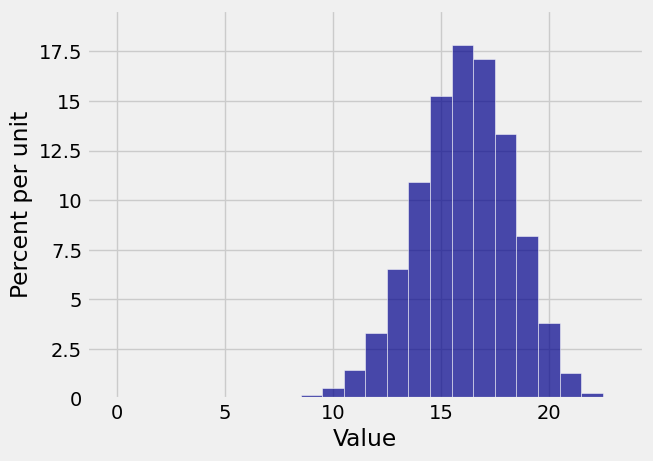6.5. Odds Ratios#
Binomial
See More
6.5.1. Consecutive Odds Ratios#
Fix
The idea is to start at the left end of the distribution, with the term
Then we will build up the distribution recursively from left to right, one possible value at a time.
To do this, we have to know how the probabilities of consecutive values are related to each other. For
These ratios help us calculate
and so on.
Even though we already have a formula for the binomial probabilities, building the distribution using consecutive ratios is better computationally and also helps us understand the shape of the distribution.
See More
6.5.2. Binomial Consecutive Odds Ratios#
How is this more illuminating than plugging into the binomial formula? To see this, fix
Notice that the formulas for
Quick Check
In the binomial scipy or combinatorics) to find
Answer
Multiply by
6.5.3. Shapes of Binomial Histograms#
Now observe that comparing
Note also that the form
tells us the the ratios are a decreasing function of
This implies that once
That is why binomial histograms are either non-increasing or non-decreasing, or they go up and come down. But they can’t look like waves on the seashore. They can’t go up, come down, and go up again.
See More
Let’s visualize this for a
n = 23
p = 0.7
k = range(n+1)
bin_23_7 = stats.binom.pmf(k, n, p)
bin_dist = Table().values(k).probabilities(bin_23_7)
Plot(bin_dist)

# It is important to define k as an array here,
# so you can do array operations
# to find all the ratios at once.
k = np.arange(1, n+1, 1)
((n - k + 1)/k)*(p/(1-p))
array([ 53.66666667, 25.66666667, 16.33333333, 11.66666667,
8.86666667, 7. , 5.66666667, 4.66666667,
3.88888889, 3.26666667, 2.75757576, 2.33333333,
1.97435897, 1.66666667, 1.4 , 1.16666667,
0.96078431, 0.77777778, 0.61403509, 0.46666667,
0.33333333, 0.21212121, 0.10144928])
What Python is helpfully telling us is that the invisible bar at 1 is 53.666… times larger than the even more invisible bar at 0. The ratios decrease after that but they are still bigger than 1 through
6.5.4. Mode of the Binomial#
A mode of a discrete distribution is a possible value that has the highest probability. There may be more than one such value, so there may be more than one mode.
We have seen that once the ratio
Let
That is,
which is equivalent to
We have shown that for all
Therefore the peak of the histogram is at the largest
So the integer part of
Because the odds ratios are non-decreasing in
The mode of the binomial
To see that this is consistent with what we observed in our numerical example above, let’s calculate
(n+1) * p
16.799999999999997
The integer part of
But in fact,
In fact you don’t have to worry when

